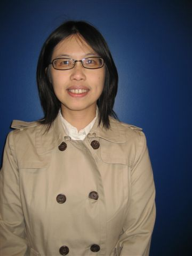Novel dip-pen nanolithography strategies for nanopatterning
Promotion date: 18. June 2010
Promotor: Prof. dr. ir. David Reinhoudt, prof. dr. Vinod Subramaniam
Assistant Promotor: Dr. Aldrik Velders
| Dip-pen nanolithography (DPN) is an atomic force microscopy (AFM) based lithography technique, offering possibilities of fabricating patterns with feature sizes, ranging from micrometers to tens of nanometers, utilizing either top-down or bottom-up strategies. Successful design and fabrication op AFM probe arrays have increased the throughput of DPN dramatically, by enabling generation of patterns in parallel. Also an AFM tip surface-modification method is developed for long-term DPN writing. A method is presented to coat the surfaces of the tips using layer-by-layer techniques. Morphology variations are described of porous films-coated silicon nitride AFM-tips. |
How did you develop your own ideas into the project?
I started the project very nicely, by cooperating with my predecessor for three months. The patterning of metal ions, as a template to immobilize proteins, was the first development into my own project. Refining the technique was a major part here.
Finding a way to modify the AFM-tip for long term writing was coming out of me even more. The demonstration of dip-pen technology to fabricate metal-ion patterns, was the most important result of the project, I guess.
Bringing up my own ideas, thinking independently, is a major personal achievement of my thesis period in Twente. Although I still discuss many issues with colleagues, like I did in the beginning, I now bring in my own opinions and views with confidence. This way of working and presenting oneself is encouraged at Mesa+ a great deal.
Was the research fundamental or more application driven?
Building experiments using new nanofabrication techniques was the main objective. Although fundamental issues arose, experiments were the most important. It suited me well, as I am an engineer originally. I like the trial and error way of working very much.
Especially in the field of supramolecular chemistry, I learned a lot from my colleagues. Being part of two groups – also the one of biophysical engineering – shows the importance of the multidisciplinary approach, needed in nanotechnology nowadays. Strategic research orientations used at Mesa+, reflect this cooperation between groups.
What are your future plans?
I am applying for a job, preferably at a R&D department of a company in the Netherlands. I guess the working atmosphere is quite different from academic research: more goal-oriented. And sometimes projects can vanish very quickly, I suppose.

